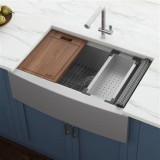How to Keep Food Warm Without Burning
Nothing beats the tantalizing aroma of a freshly cooked meal, but keeping it warm until it's time to serve can be a culinary challenge. Whether you're hosting a dinner party or simply preparing a weekday meal, mastering the art of maintaining food's temperature without overcooking is essential for a delicious and enjoyable dining experience.
Fear not, home cooks and culinary enthusiasts! This guide will delve into the essential aspects of keeping food warm without burning, empowering you with techniques and tips to ensure your culinary creations remain at their peak of flavor and texture.
1. Choose the Right Container:
The first step to preventing burning is selecting an appropriate container for holding your food. Look for insulated containers with a tight-fitting lid, such as a slow cooker, thermal cooker, or a double-walled thermos. These containers will trap heat effectively, preserving your food's warmth for an extended period.
Avoid using containers made of conductive materials like metal, as they can transfer heat too quickly and cause food to overcook. Instead, opt for non-conductive materials like ceramic, glass, or plastic.
2. Set the Ideal Temperature:
The temperature setting is crucial for keeping food warm without burning. If your slow cooker or thermal cooker offers variable temperature settings, adjust it accordingly. For most dishes, a low or warm setting will suffice to maintain the desired temperature without overcooking.
Use a food thermometer to monitor the internal temperature of your food. Aim for a temperature slightly below the desired serving temperature, as the food will continue cooking slightly while it rests.
3. Add Moisture:
Moisture is essential to prevent food from drying out while warming. Add a small amount of water, broth, or sauce to the bottom of your container. This will create a humid environment that helps preserve both the texture and flavor of your food.
Alternatively, you can cover the food with a damp cloth or parchment paper before sealing the container. This method is particularly effective for dishes like roasted vegetables, which tend to lose moisture quickly.
4. Utilize Indirect Heat:
Direct heat can easily overcook food. To prevent this, use indirect heat methods to keep your food warm. Place your container on a trivet or heat-resistant surface to elevate it from the direct flame or heating element.
You can also warm food in the oven at a very low temperature (around 200°F). This method is suitable for soups, stews, and other liquids, as it prevents scorching or boiling.
5. Monitor and Adjust:
Once you've placed your food in a warm environment, it's essential to monitor its temperature regularly. Use a food thermometer to check the internal temperature and adjust the settings or add more moisture if necessary.
Remember that different foods have different cooking times. Delicate items like fish or vegetables will require less heat and time to warm through, while tougher meats may need slightly longer.

4 Ways To Keep Food Hot Wikihow

2024 Super Bowl Tips For Keeping Food Hot All Party Long

How To Keep Food Warm For Hours Before Serving With No Quality Loss

4 Ways To Keep Food Hot Wikihow

10 Ways To Keep Food Warm At Your Next Party Aleka S Get Together

10 Ways To Keep Food Warm At Your Next Party Aleka S Get Together
How To Keep Hot Meals Warm For A Party Without Staying In The Kitchen All Time Quora

4 Ways To Keep Food Hot Wikihow

16 Ways To Keep Food Warm When Transporting
How To Keep Hot Meals Warm For A Party Without Staying In The Kitchen All Time Quora








